Our crew of dedicated technicians has outdone themselves this year with an excellent set of articles about our Lucky Peak fall migration project. This season was full of surprises including some very unexpected highs and some mysterious lows. You can read the whole article, or skip ahead using these links to read about songbirds, hawkwatch, raptor banding, and owls.
The Morning News
By songbird bander and crew lead Lucian Davis
The 2023 songbird season started with a bang – after two years of waiting in vain for days over 100 birds, we banded 107 on the first fall migration banding day. After two record low years in 2021 and 2022, this was a good sign for the coming season. Moving into August however, our captures slowed down significantly, and frequent wind and rain kept nets closed many days. Things picked back up again in September, with our highest day of the season at 126 birds.
Still, it wasn’t quite enough to push us towards a high or even average year.
Fog settles in camp leaving the banding yurt barely visible in the distance. The Mountain Ninebark shrub understory is turning yellow, and the fog is drifting through the Douglas Fir trees. You can barely see the tan roof of the yurt through the mist. Photo Credit: Lucian DavisThe birds we were catching were also unexpected. In 2022, we caught a total of seven Red-breasted Nuthatches all season (a below-average total), so you can imagine our surprise when we had 14 in one net on a single day in August this year! We ended the season with 360 nuthatches, a record high. I equally enjoyed and was frustrated by the challenge of determining the age of the numerous Red-breasted Nuthatches, whose juvenile and adult feathers are only very subtly different.
Despite having banded at Lucky Peak for quite a few years now, I still learn so much each season!
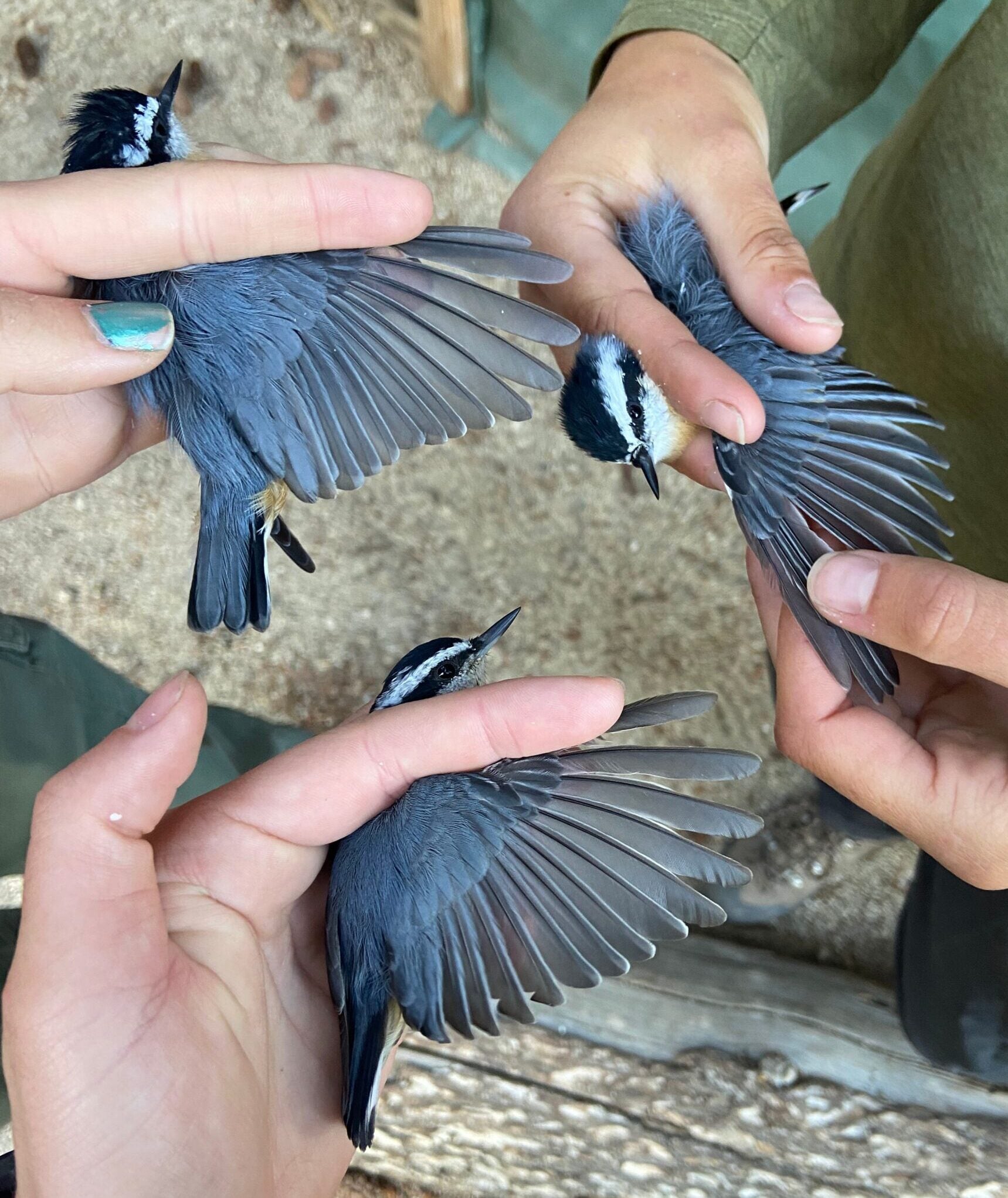
Nuthatches were not the only record high, we also set records with Mountain Chickadees (331), Cassin’s Finches (98), Steller’s Jays (5), and Chestnut-backed Chickadees (21). The Chestnut-backed Chickadees were a crew favorite – these adorable chickadees are typically found on the west coast and in northern Idaho, and very rarely stray down into southern Idaho. Their presence, and our other record highs, are due to a large irruption of Rocky Mountain species.
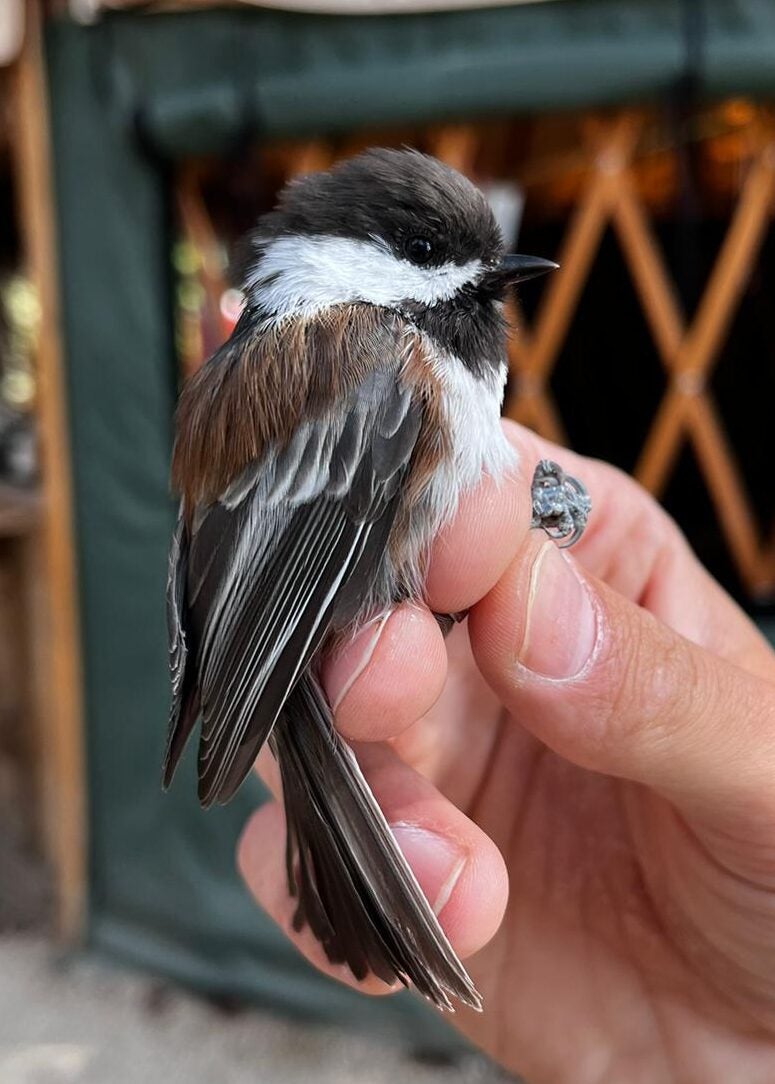
In addition to our unusual captures, we also observed high numbers of White-breasted Nuthatches (including two captured), Pygmy Nuthatches, Red Crossbills, Steller’s Jays, and Pine Siskins. For the first time since 2006, we caught Red Crossbills, four young birds. These enigmatic finches typically stay high in the treetops, away from our nets. With so many around, we got lucky, and had the opportunity to see this incredible species up close. Crossbills are one of my favorite avian groups…
…and having one in hand was a dream come true!
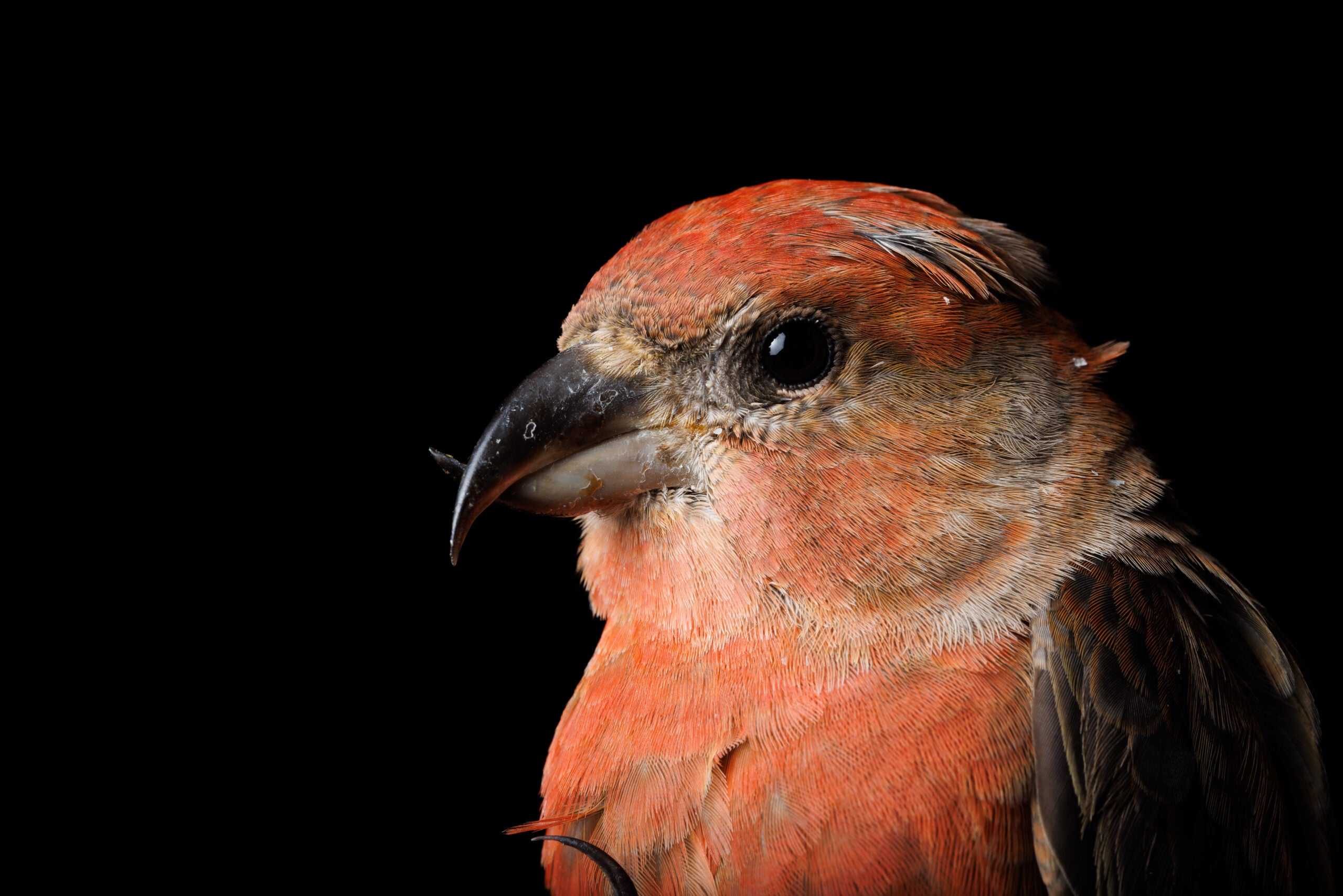
Other unusual captures included a Pacific Wren, Varied Thrush, the station’s first ever White-throated Sparrow, and two Golden-crowned Sparrows. Irruptions occur when species who move and breed in response to changing conditions move farther south than normal. This can be due to a productive breeding causing juveniles to disperse to a less crowded area, or due to a lack of food in the northern part of a species range, pushing them south in search of food.
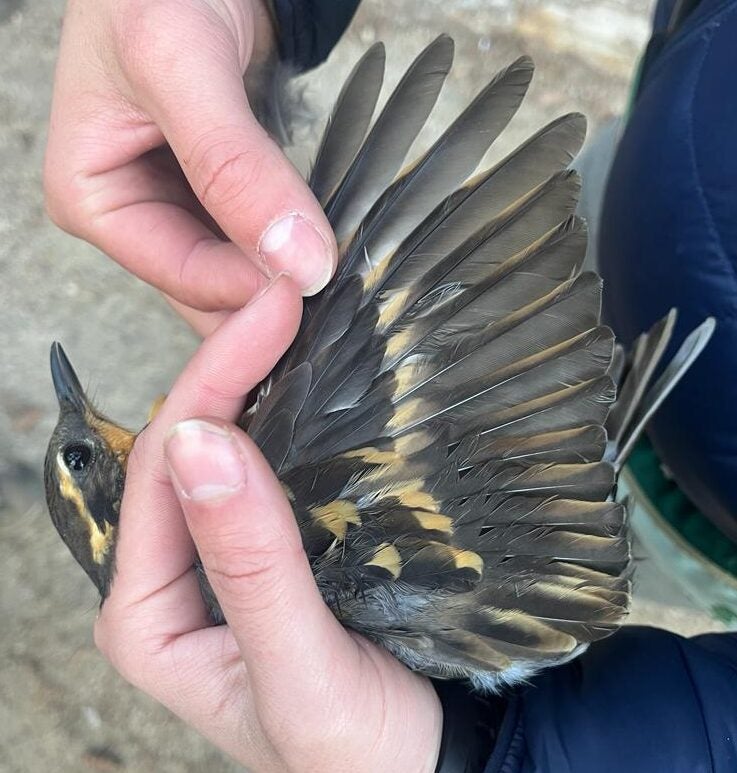
Although we don’t yet know the cause of this year’s irruption, documenting it was a highlight of the season. In the final week of banding, we just barely surpassed last year’s final count of newly banded birds, avoiding a dreaded third in a row record low year. However, it was really only two species that saved us, the Red-breasted Nuthatches and Mountain Chickadees!
Without their unusually high numbers, we would be nearly 600 birds behind last year’s record low.
Our numbers for most of our typically abundant species were below average, and it was a record low year for quite a few warbler species, Ruby-crowned Kinglets, Western Tanagers, and more. Ruby-crowned Kinglets are usually one of our most abundant species, dominating the captures at the end of the season. We average around 1,000 Ruby-crowned kinglets every year, but this year averaged just under 350 banded, which was nearly 250 birds lower than the previous record low.
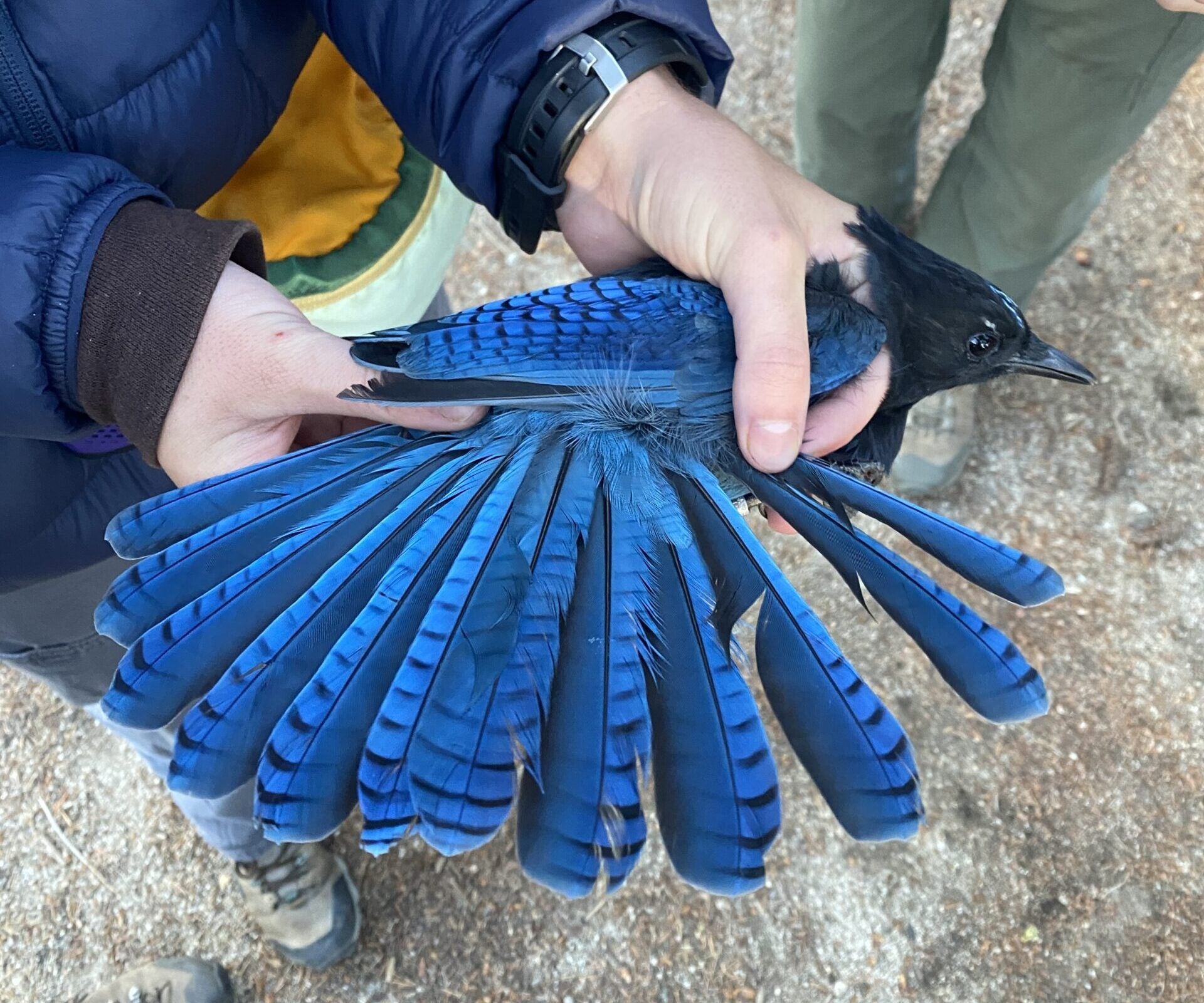
Although it is normal for our numbers to fluctuate year to year, these last three years are unusual. Low years are typically followed by higher years. We ended the 2023 season with only 3,772 new birds banded.
We have some ideas behind these low numbers, but no definitive answers yet.
Among our potential culprits are a mass mortality event in the southern Rockies in fall 2020, drought, and unusually hot weather as well as the various factors we know are causing longer term declines – habitat loss, insect declines, and more.
This has been my third year on the songbird crew at Lucky Peak, and experiencing these record low years has made me increasingly worried about western songbird populations. We’re anxiously awaiting next year’s season, in hopes of better numbers.
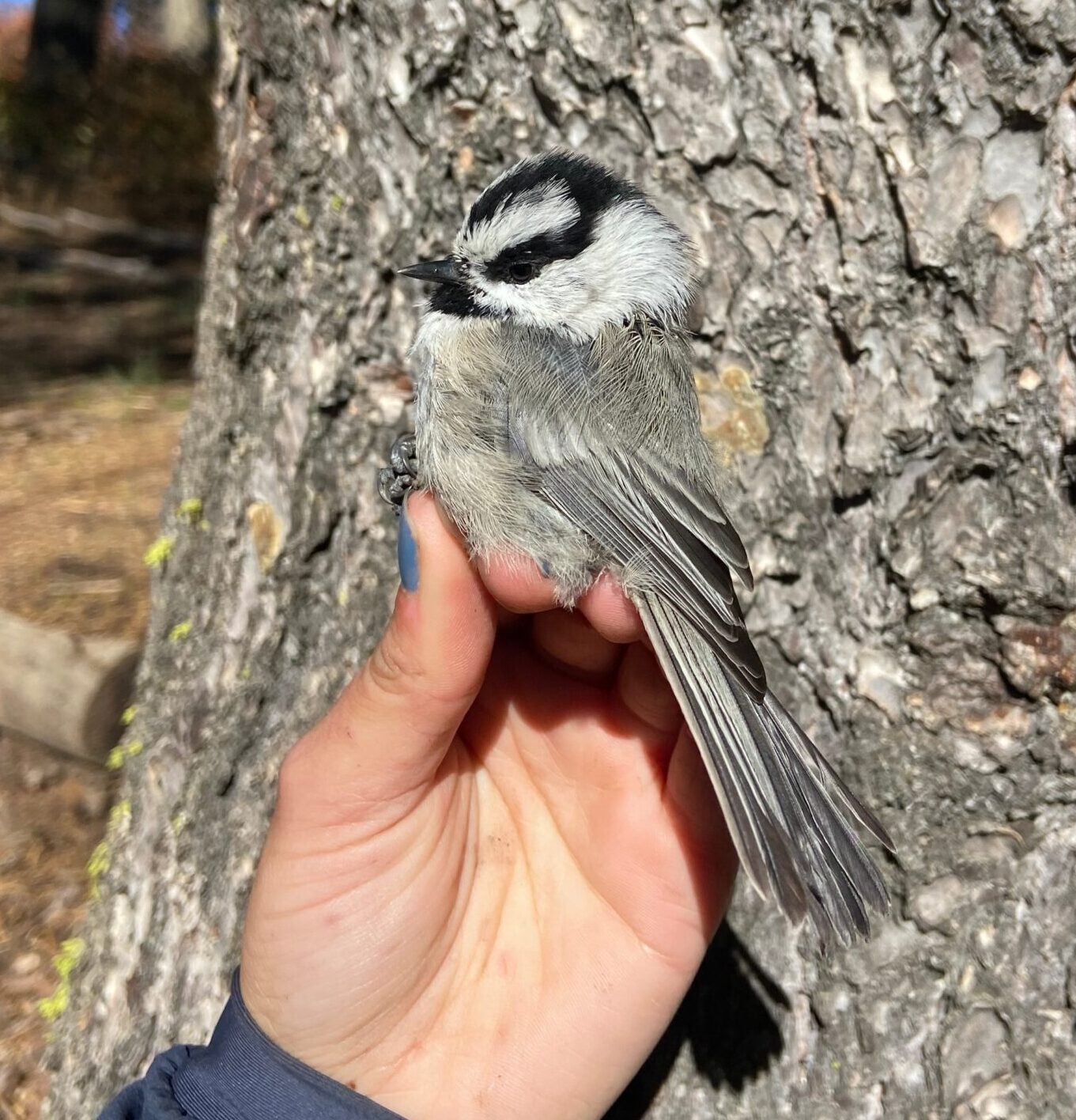
The Afternoon News
Hawkwatch
By hawkwatcher Phil Stollsteimer
There’s something special about getting to watch the spectacle of migration in real time. Sitting atop Lucky Peak every day and counting the raptors that passed along the ridge gave me a glimpse into the lives of thousands of individuals and a deeper appreciation for their impressive endeavors.
It was an act of mass relocation unfolding right in front of us- some birds taking on a multi-thousand-mile effort at only a few months old.
While Lucky Peak was just a transient waypoint for the majority of these birds, the hawk watch crew valued every interesting behavior, subspecies, and act of determination that we observed.
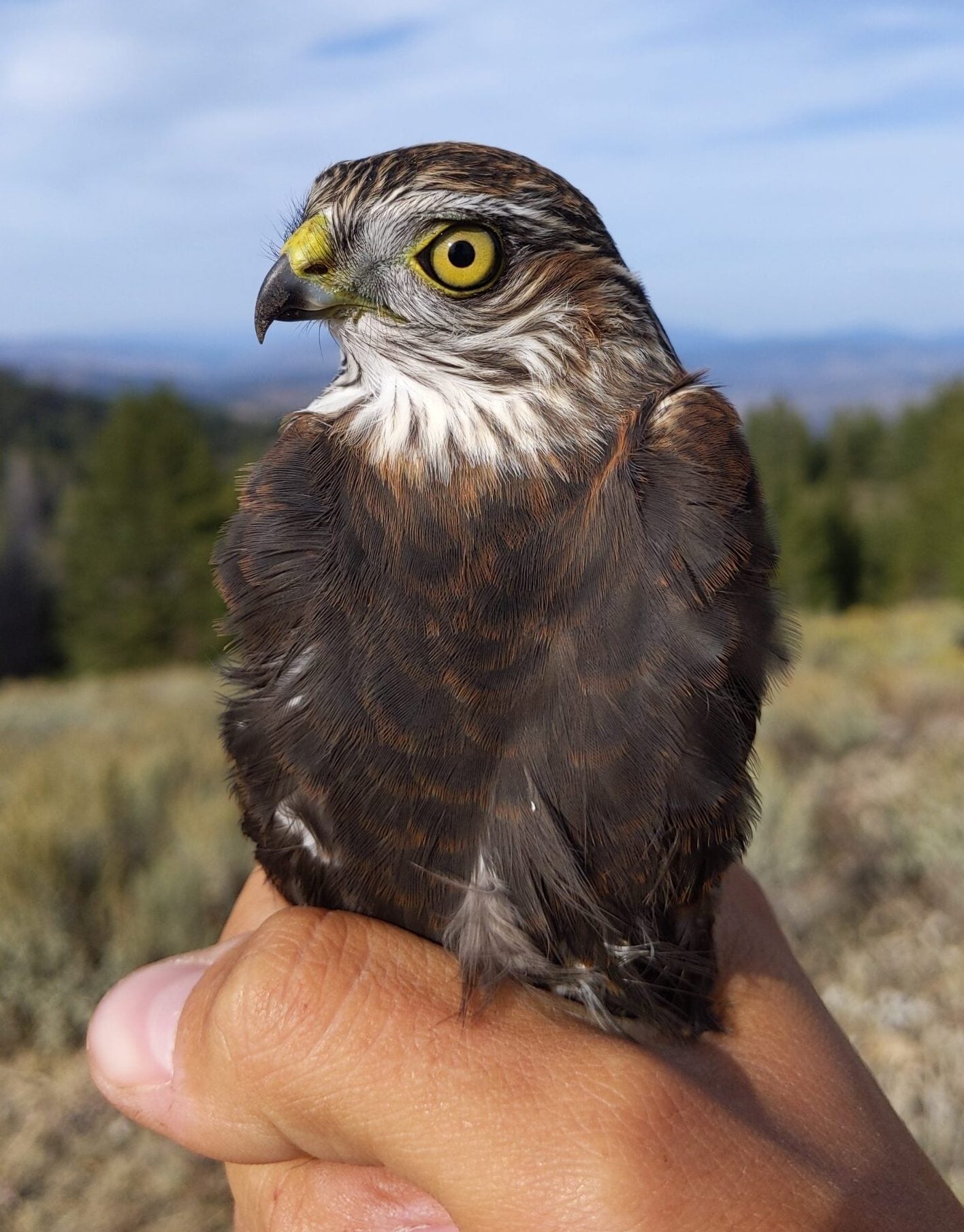
This is my favorite thing about raptor migration. Unlike most birds, diurnal birds of prey move in the middle of the day, allowing birders to watch their flight. After over a decade of birding, I have spent my fair share of time at hawk watches in the fall. However, there’s nothing like being out there every day throughout the season.
Not only did I fine-tune my ID skills, but I also learned how the birds interact with this specific location.
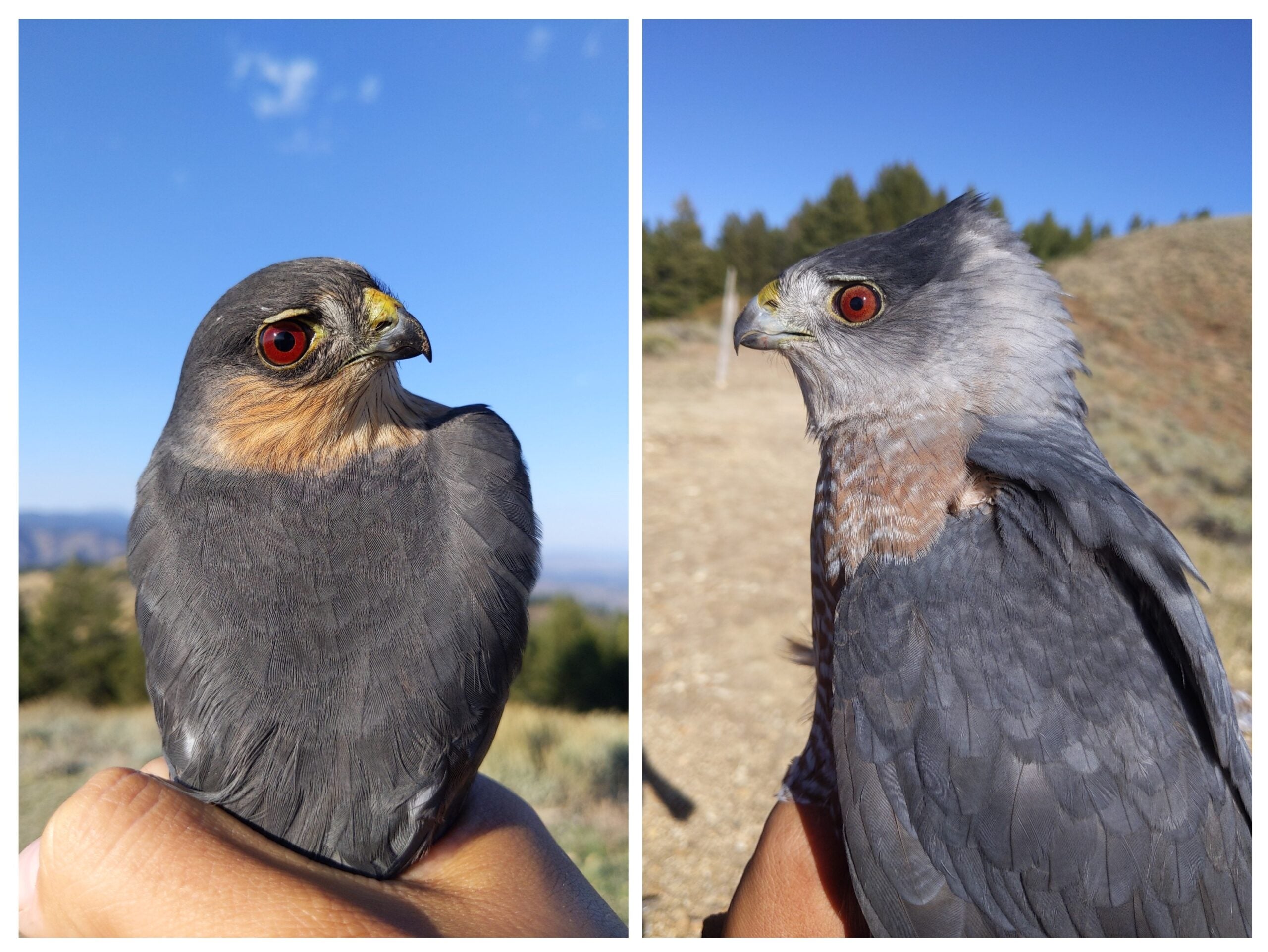
Being at the southern tip of the Boise Ridge, Lucky Peak is the final haven for many species before they contemplate crossing the barren desert of the Snake River Plain. This rapid change in biomes is apparent in the behavior of many raptors. Particularly as the sun gets lower and the flight comes to an end…
…there is visible hesitancy in the birds to leave the mountains and start over the desert.
While this would occasionally make our job trickier, as we don’t want to double count any birds that circle around the peak as they try to decide whether to continue or find a place to roost, I loved watching this behavior and feeling an understanding of their thoughts.
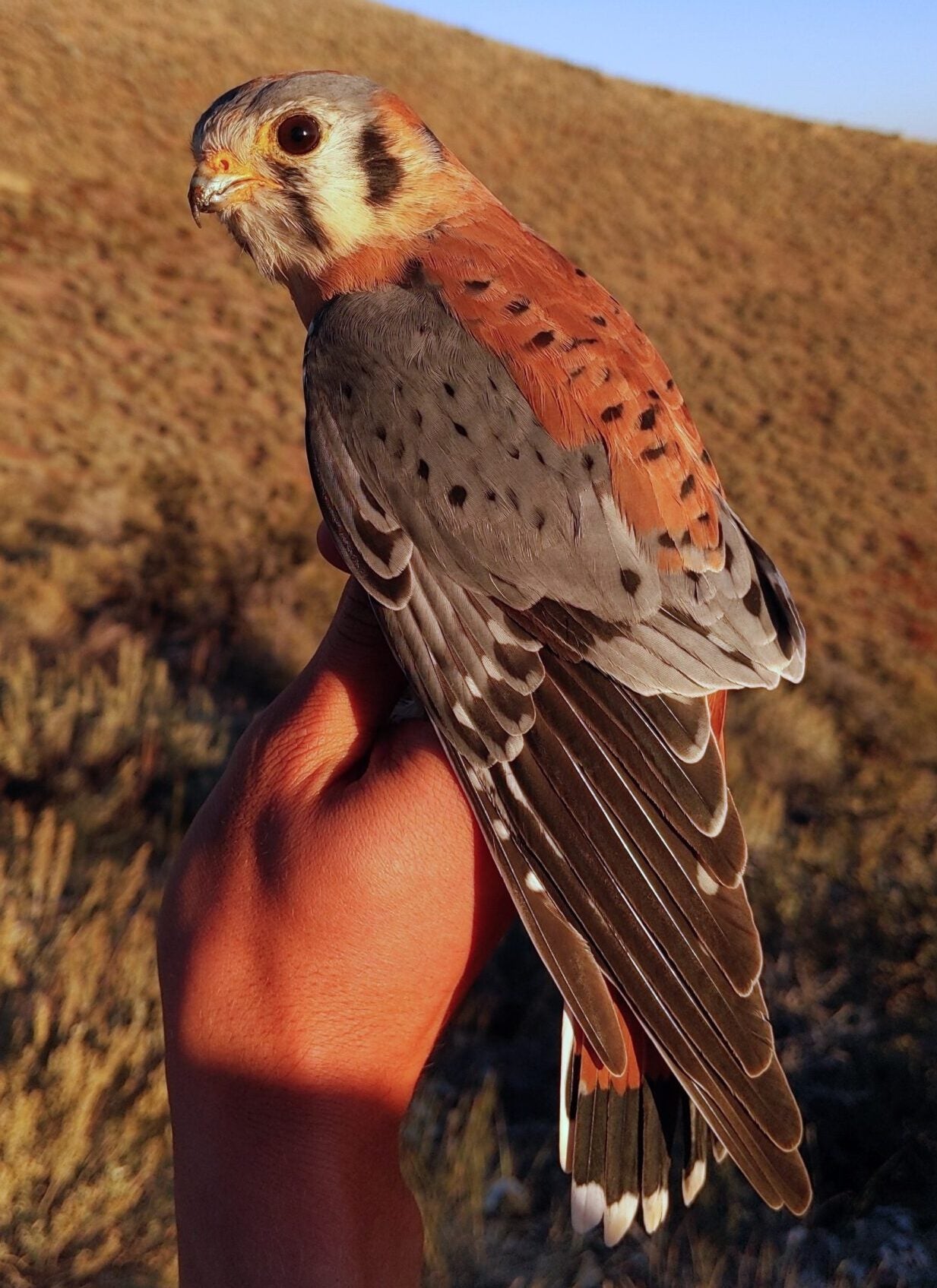
For me, this holistic experience made the slow days much more enjoyable. Unfortunately, these slow days proved to be a consistent theme, as we had many slow days on the peak this season. Between an unusually high number of bad weather days that limited our counting time and any number of factors that influenced breeding success prior to migration, we recorded only 4,858 raptors this fall.
Interestingly, low Sharp-shinned Hawk numbers were one of the main drivers for our mediocre hawkwatch totals. Considering that these small raptors are one of the #1 songbird predators at Lucky Peak, it makes us wonder whether the low prey numbers influenced these tiny predators.
This number falls around 1,500 birds short of the historical average for Lucky Peak.
Additionally, we had a great year for passerines and other non-raptor species. We observed the third documented record for both Black Swift and Pinyon Jay at Lucky Peak.
Many bird populations ebb and flow on a regular basis and while this year may not have been a phenomenal year for overall raptor numbers, we still recorded an impressive diversity and above average numbers for multiple species.
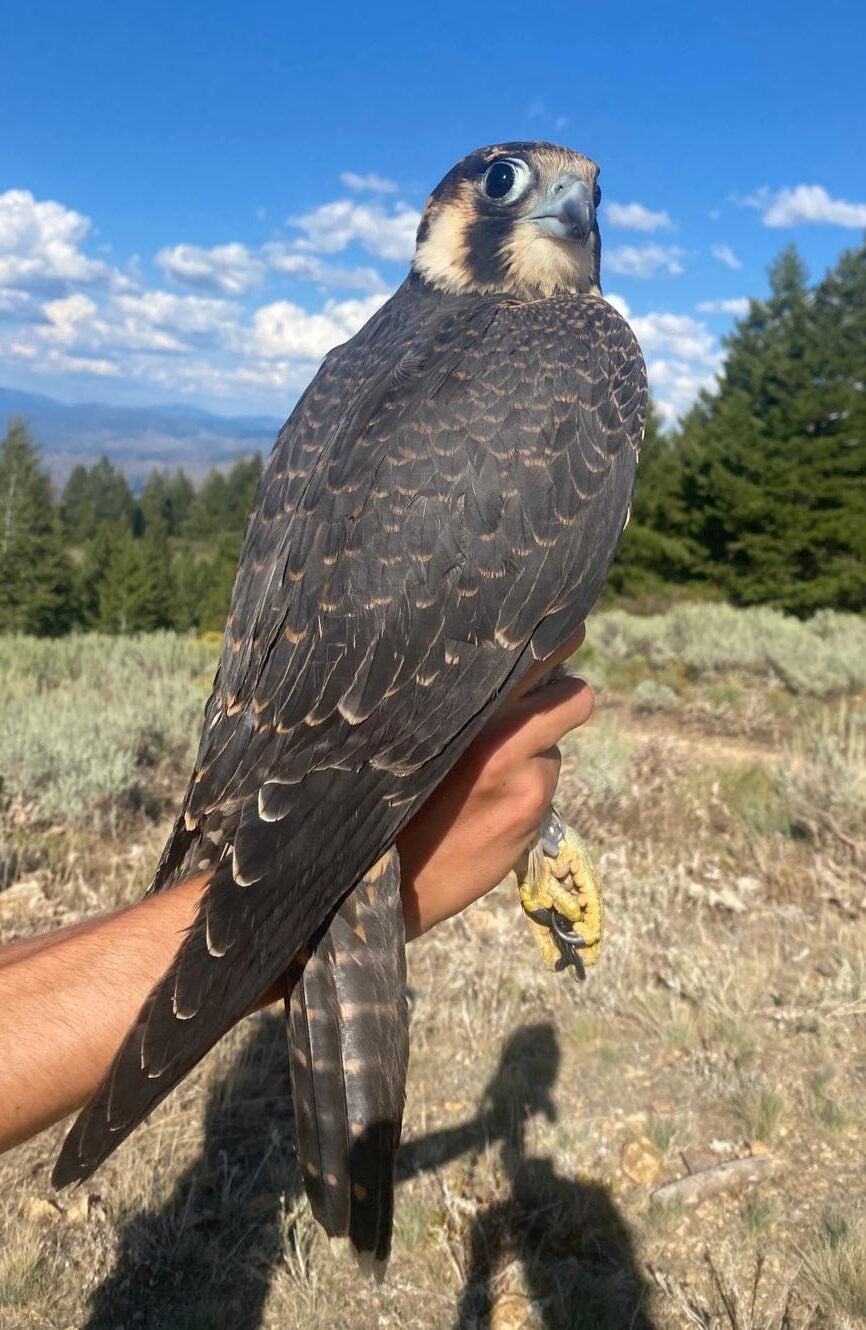
Overall, it was a wonderful season filled with exceptional birds, people, and experiences. We wish all of our migrants good luck on their journey and hope to see them next year!
Raptor Banding
By the Lucky and Boise Peak Raptor Crew
Eden Ravecca: An Unforgettable Day at Lucky Peak
This was my third fall migration season at Lucky Peak volunteering as a raptor bander on my days off. Monday October 2, 2023, turned out to be unlike any other trapping day I’d experienced.
As I arrived around 10:30 am, the station appeared to be suspended in the sky surrounded by a dense cloud. Winds howled, a frigid mist crept in through the windows of the trapping blind. Visibility was reduced to a mere 20 meters and as I sat within the thick fog I wondered if I’d spot any raptors, let alone lure them in. But while I could have opted to close the station, I decided to brave the cold and wait.
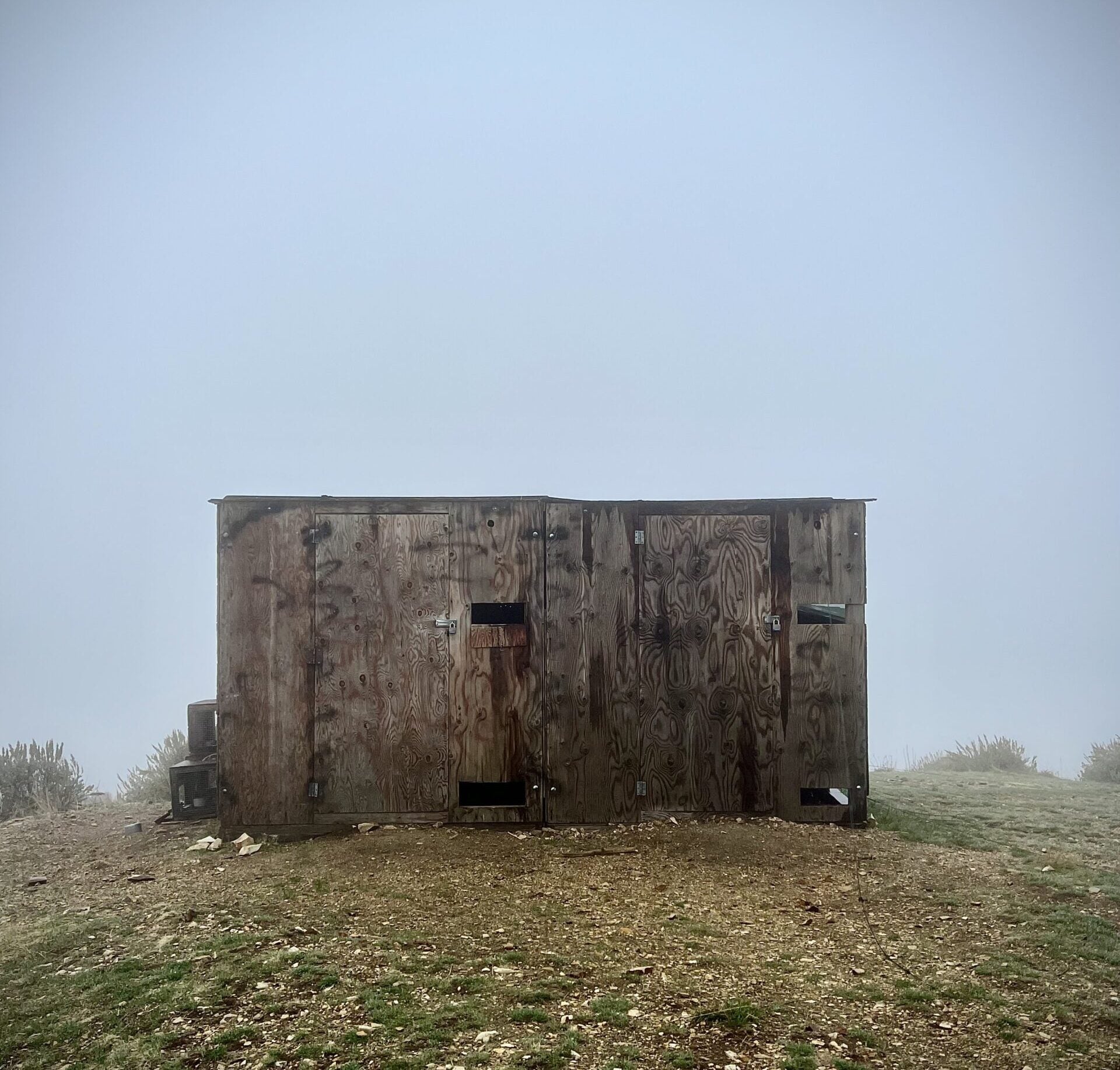
Over the years volunteering with IBO, I’d encountered many beautiful birds of very cool species, from gorgeous dark morph Red-tailed Hawks to majestic Golden Eagles.
But there was one species that remained high on my banding bucket list —the Peregrine Falcon.
During the last two seasons, Peregrines expertly eluded me. On several occasions, they had come blazing through the station, swooping in and peeling up towards the sky before coming back down like missiles. Most of them stuck around for 10 or 15 minutes, seeming very interested and making endless passes, but I was never able to close the deal.
These falcons are incredible creatures! The fastest animal on earth; they carve through the air with such ease and control, even in conditions so windy that the sky is void of most other birds.
They were like a fleeting dream.
Around 3:00 pm, the sky finally started to open up, and within two minutes, a Sharp-shinned Hawk hit the net. That was all I needed, one bird would make the wait worth it.
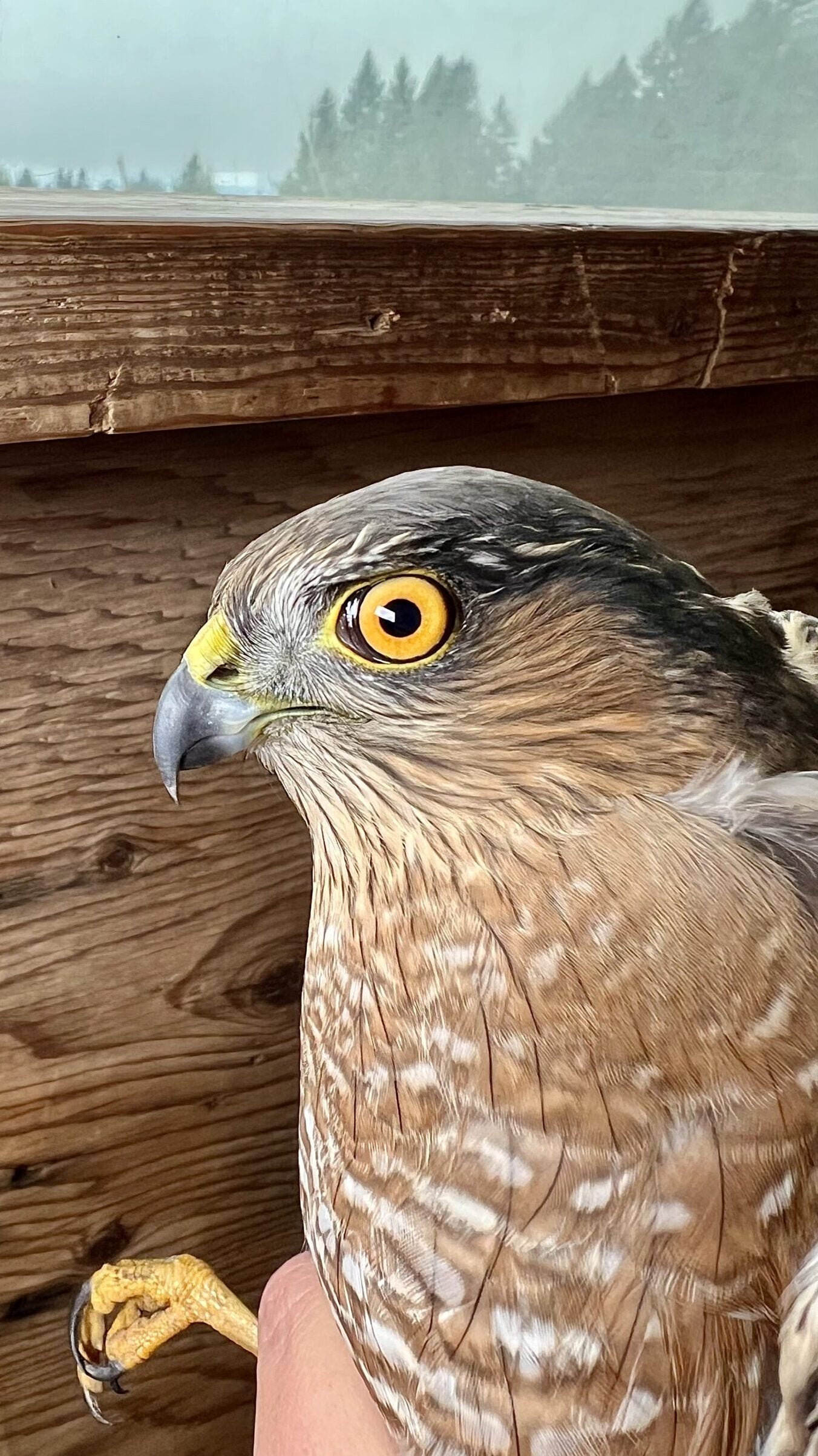
The wind continued to break up the clouds and the hungry raptors kept coming.
It was a diverse day of banding, including the trifecta of North American Accipiters – Sharp-shinned Hawk, Cooper’s Hawk, and (the newly named) American Goshawk!
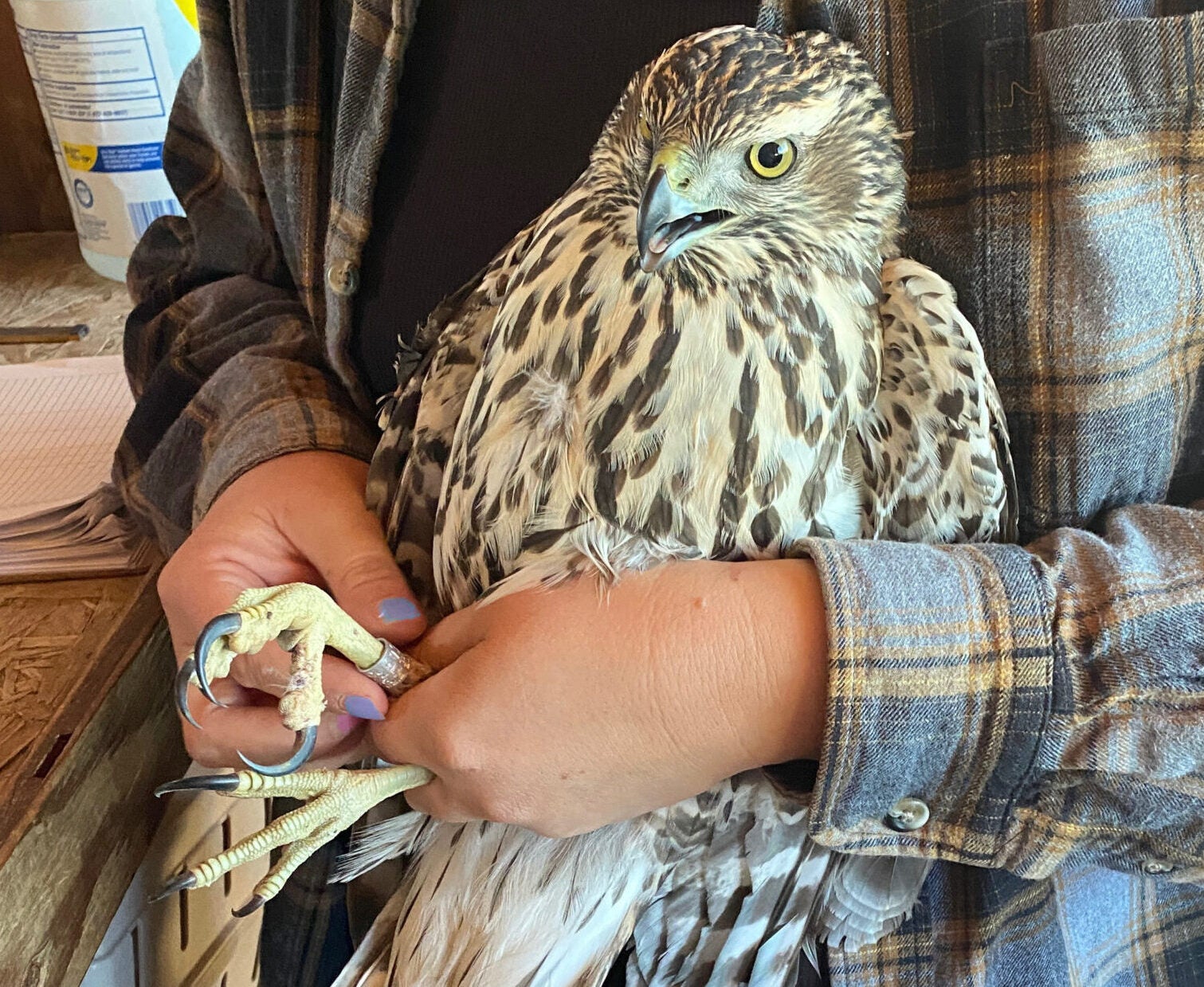
The diversity ramped up as the skies continued to clear. Next into the nets came the Falcon species-first, a feisty American Kestrel, followed by a stunning Merlin.
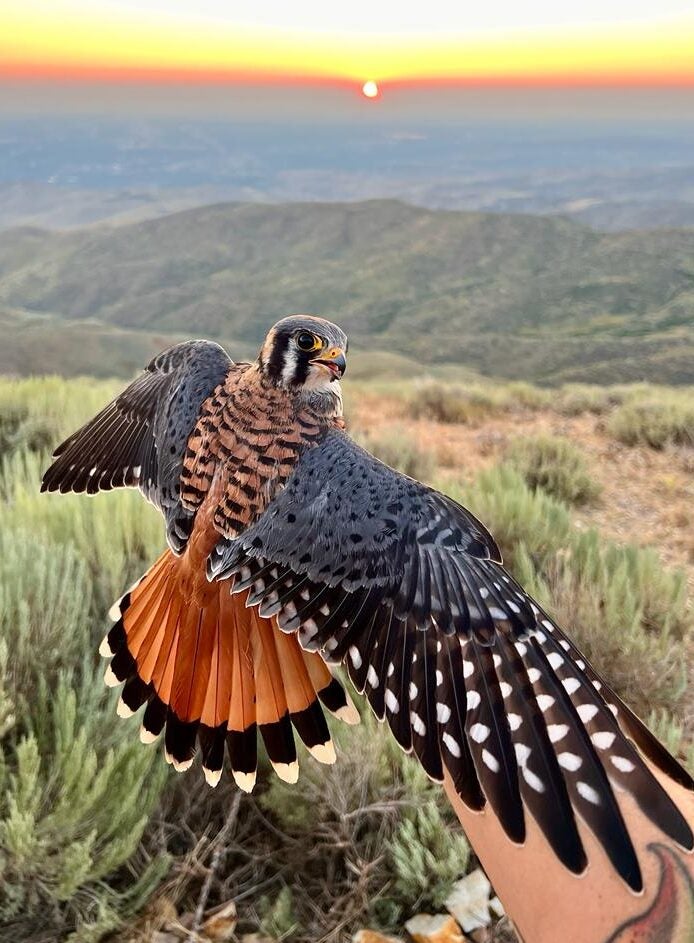
Then, on that cold and windy Monday, it finally happened.
With just minutes left before closing the station I said “Alright, 10 minutes to catch a Peregrine!” To my delight, the universe was listening and delivered. A magnificent hatch-year Peregrine Falcon tore into the station and graced me with her powerful presence.
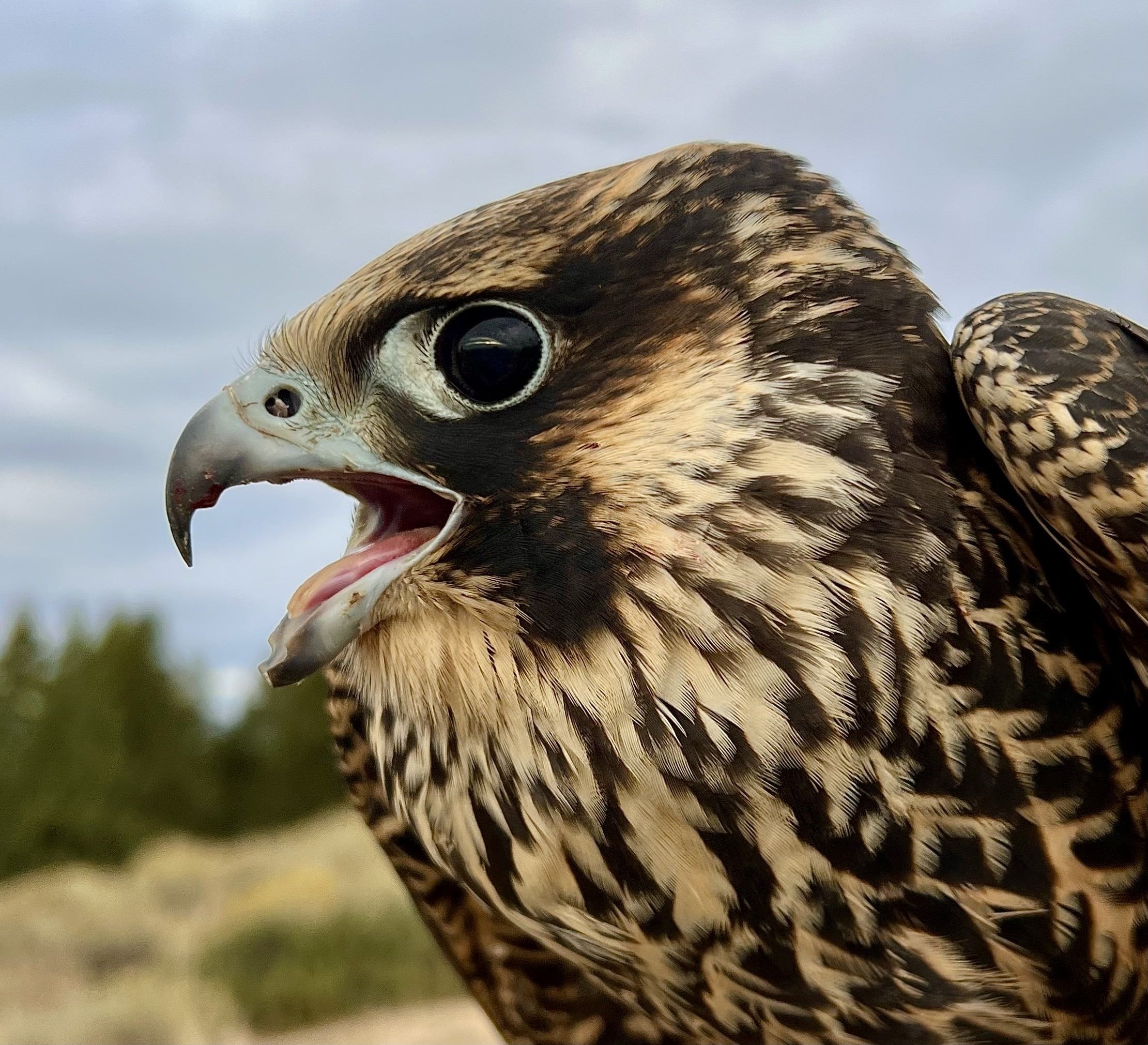
She’s the largest falcon I’ve ever banded, weighing in at over 950 grams! This was one of the most memorable days I’ve had in the blind, despite the slow start. It wasn’t about the number of birds, but it was the diversity that made it special, and banding my first Peregrine Falcon. I had never banded six species in one day, and when I sent out the end-of-day recap to our banding group text, one of our fellow banders summed it up perfectly: “A blessed day”.
Isaac Grosner: A Dream Come True at Boise Peak
This was my second consecutive fall working for IBO. Last fall, I spent my time at Lucky Peak, working on Hawk Watch and spending a day or two per week in the blind, getting to trap and band many cool raptors. But this year I had my eyes set on one species in particular – a Golden Eagle. I’ve had close calls with them in the past, and was hoping this would be the year that I finally caught one. And since Golden Eagles are more commonly caught at IBO’s Boise Peak station…
…that’s where I headed.
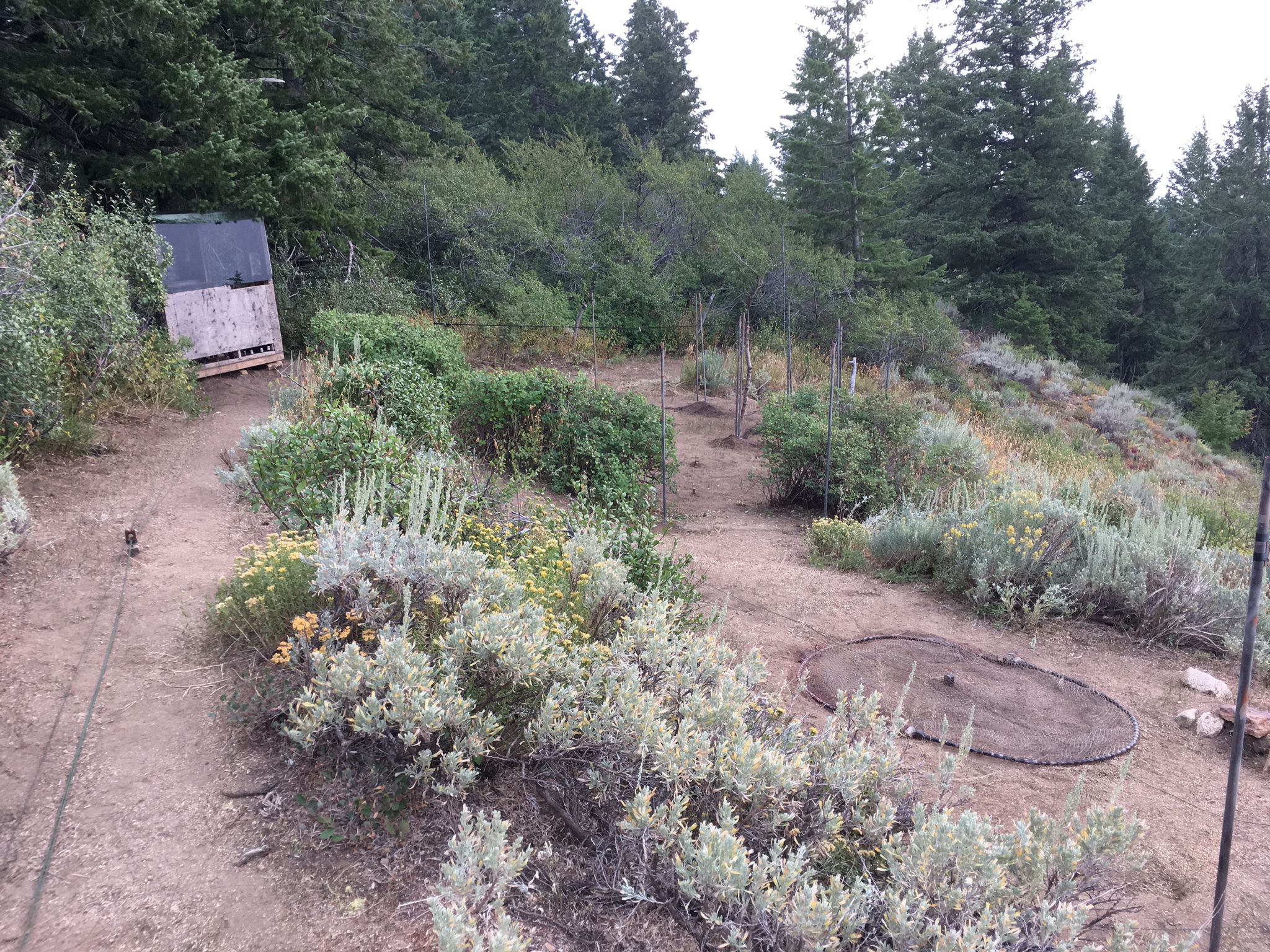
We officially opened for the season on August 27th, and I didn’t have to wait long to catch some amazing raptors. A beautiful hatch-year male Northern Harrier found its way into my nets on September 10th, dazzling me with its creamy orange body.
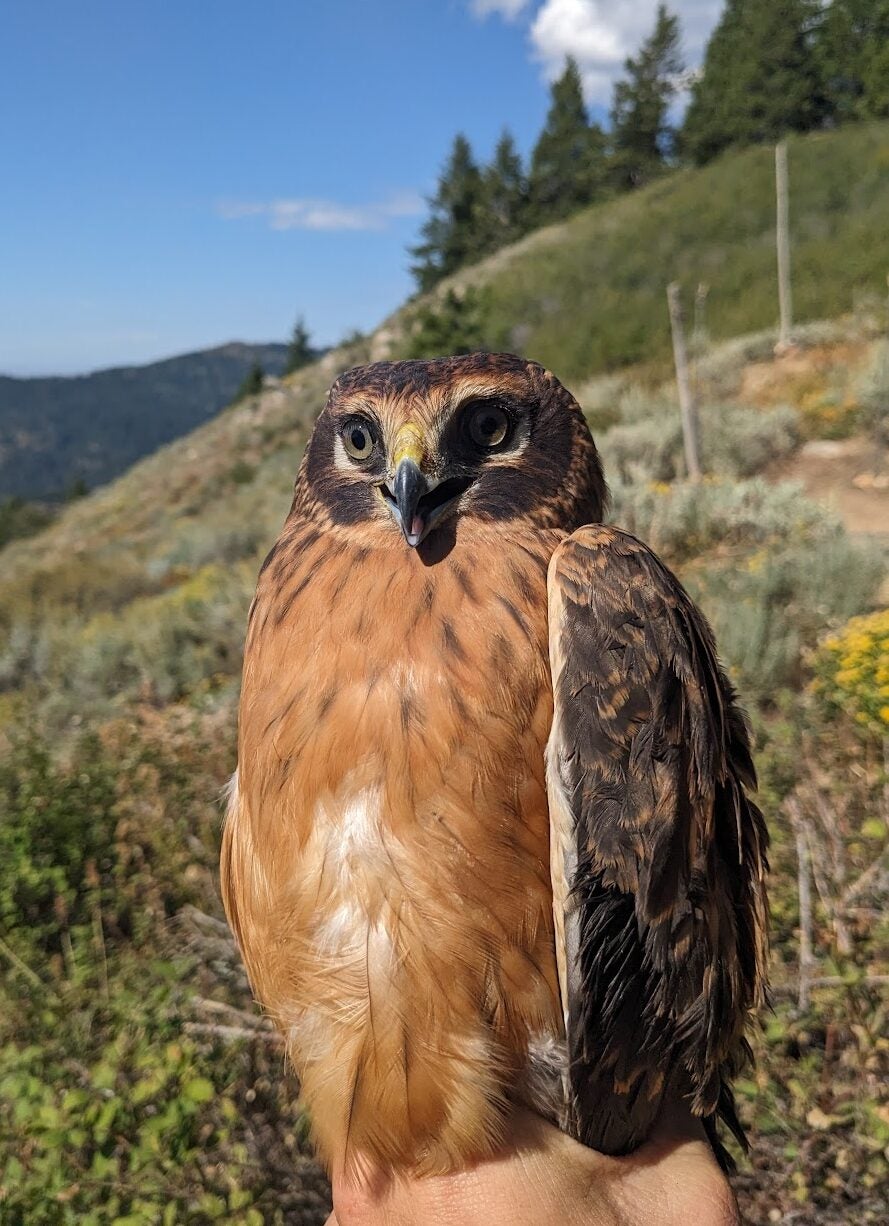
A few days later on September 13th a hatch-year male Peregrine Falcon spent two hours stooping and zooming all over my station before I finally caught him!
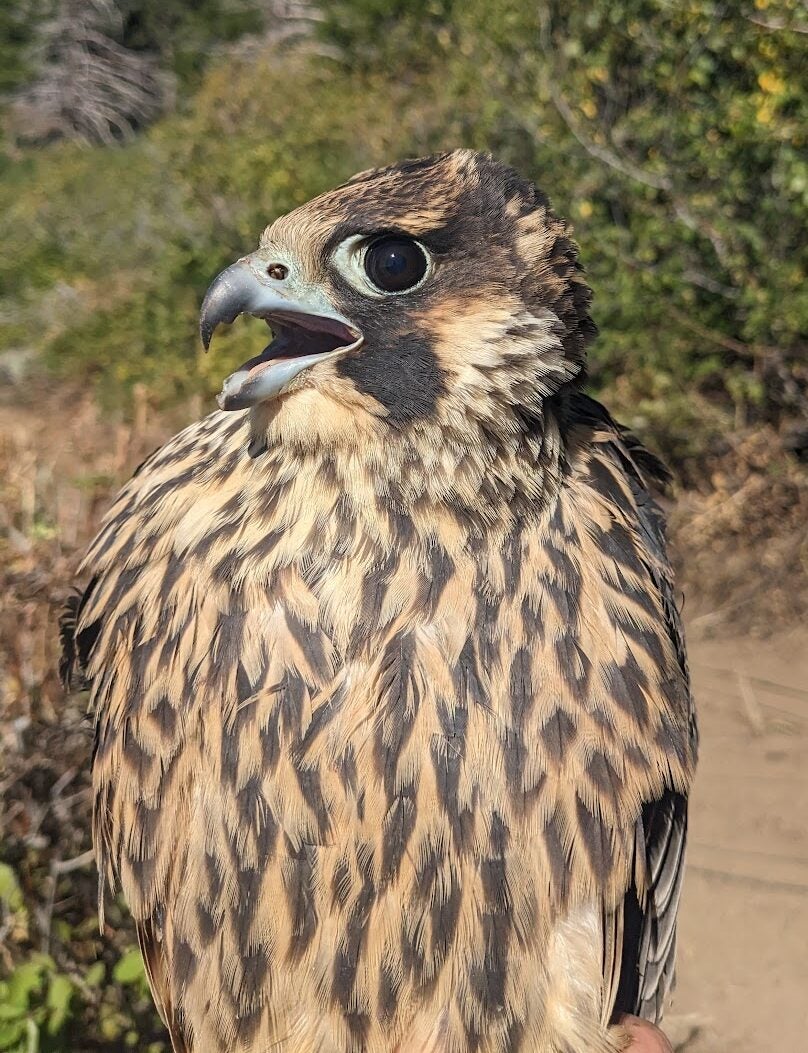
Then, on September 22nd, I was graced with the presence of a stunning adult American Goshawk! An adult goshawk is a rare catch, and this second-year female wowed me with her beauty and fierceness.
And yet as the season went on, I was still keeping my eyes peeled for the one bird I wanted the most.
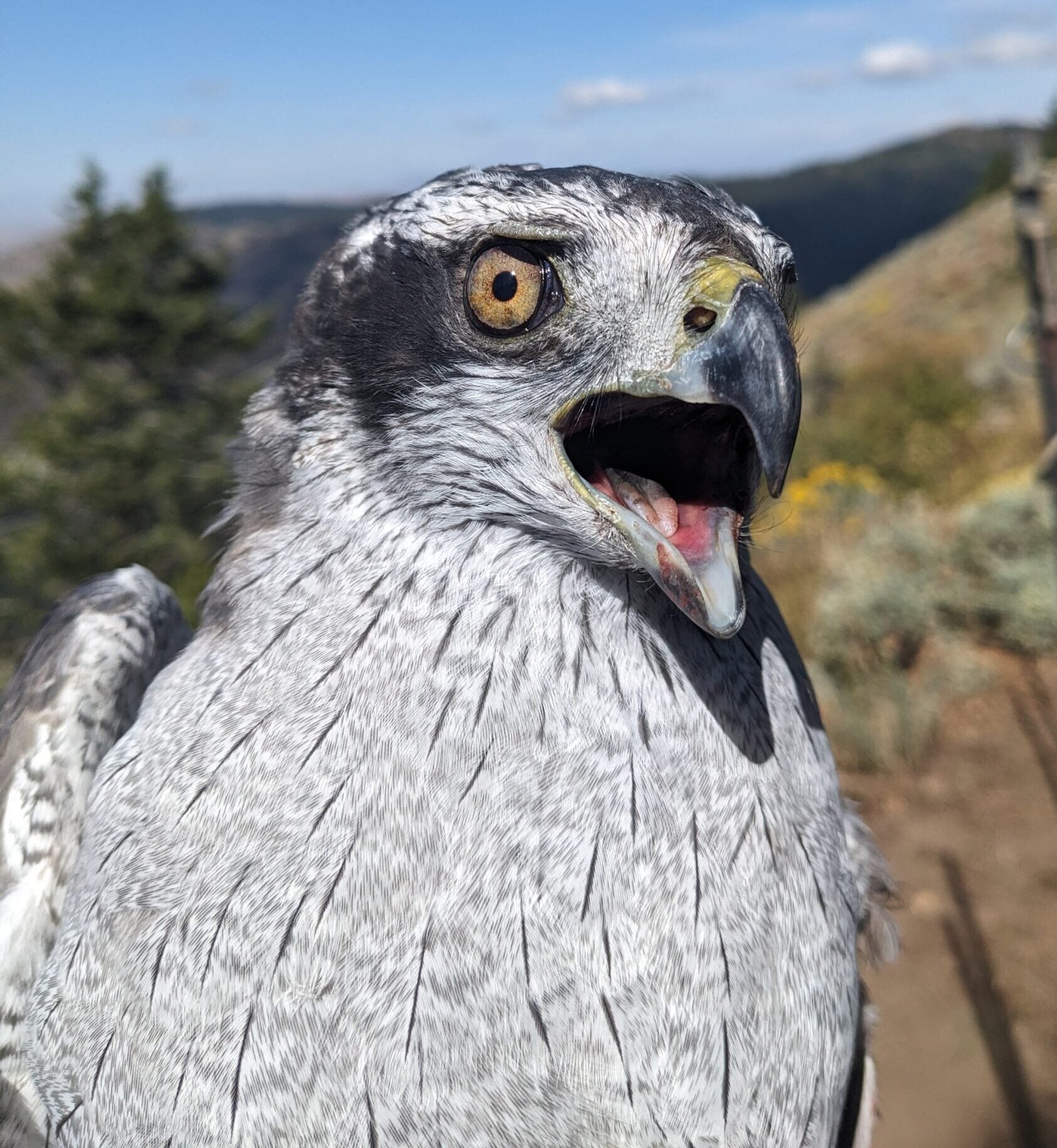
And then, on October 5th, it happened. I was watching some Sharp-shinned Hawks circling in the valley in front of me, trying to get their attention with my pigeon.
All of the sudden I simultaneously see a massive shadow go over the blind and hear a “whoosh”…
…a telltale sign that a raptor is barreling down onto my pigeon from behind. I blink, and there it is: a Golden Eagle, perfectly centered in my bow net. I flip the bow and run out of the blind to the now safely-trapped eagle, barely able to believe what just happened. After three seasons of being involved in raptor trapping, I had finally caught a Golden Eagle! It was a moment I’ll never forget, and one of the most exciting moments of my career as a biologist.
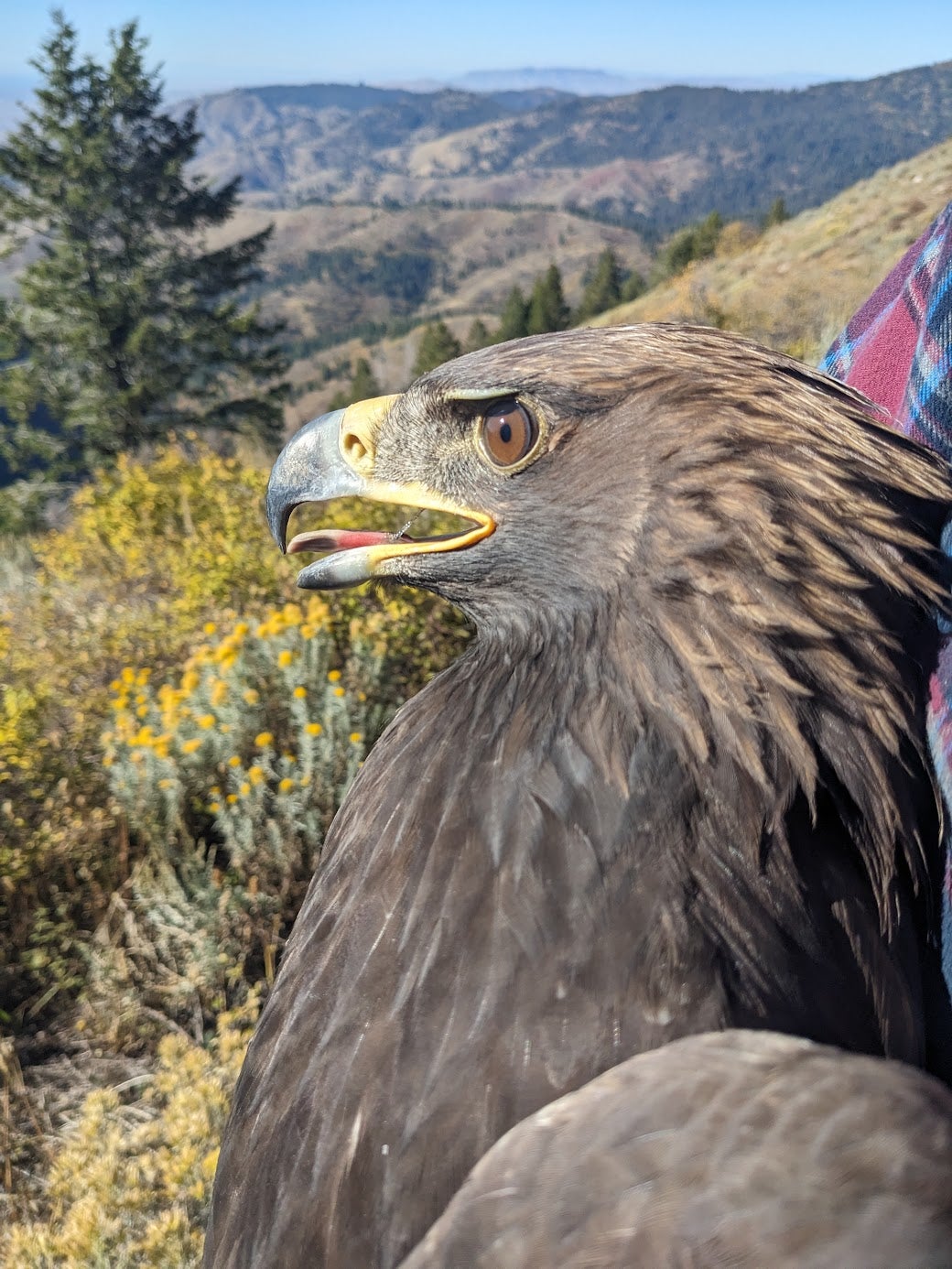
The Evening News
By Phoebe Honscheid
Owls are mysterious. They’re difficult to see, not often heard, and many are active in the darkest hours of night. This is the allure of owl banding: unveiling these cryptic creatures to observe them up close.
This was especially true with the Flammulated Owl, a species that neither of the full-time owl crew had seen before and a big reason for us to come work at IBO.
Lucky Peak is the only migration banding station that regularly catches this elusive, moth-eating owl.
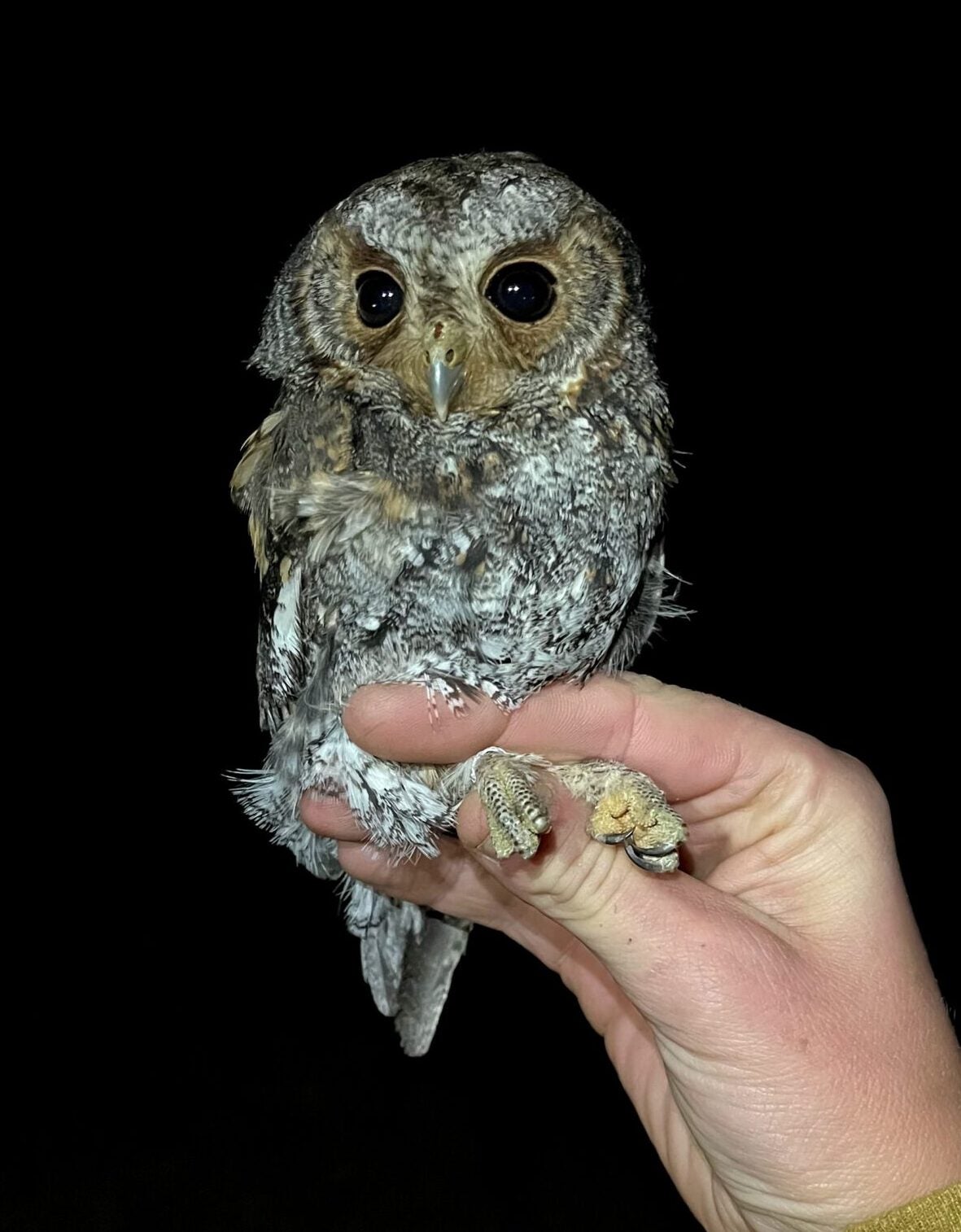
Consequently, very little is known about their migration, ecology, and aging characteristics. Part of our goal this season was to document the plumage of each Flammulated Owl with a series of photographs to help future biologists age these birds.
Needless to say, we were awestruck to find our lifer “Flam” on the third net run of our first night, followed closely by a second capture!
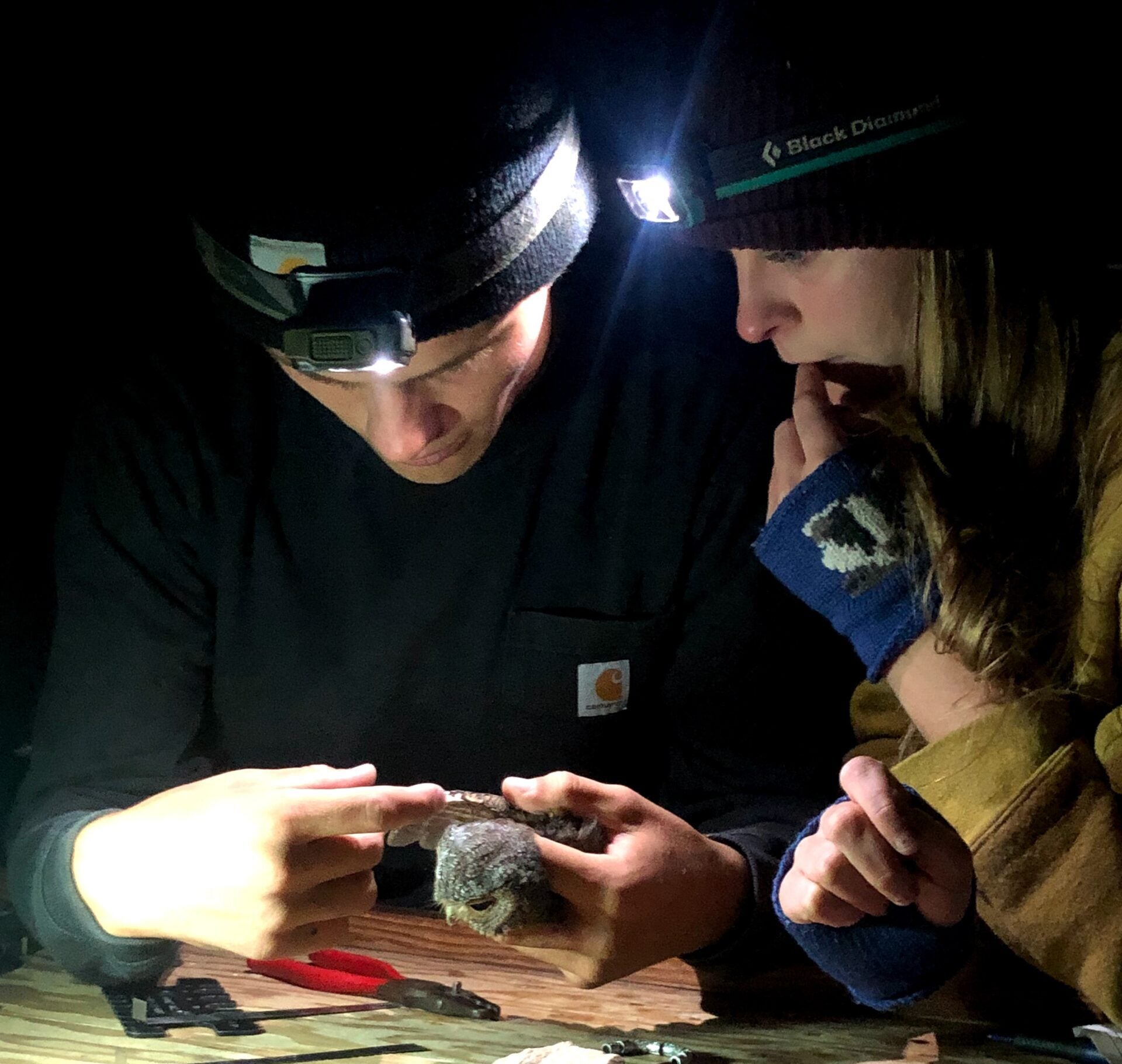
Throughout the next few weeks, we saw a steady stream of Flammulated Owls, typically catching one or two per night until their migratory peak on September 17, when we caught 9 in one night. We caught our first Northern Saw-whet Owl a week earlier…
…having no idea that it would be the start of something legendary.
We had heard from Rocky Point Bird Observatory in British Columbia that they caught more Saw-whets in their first week than in their entire last season. Every four years, Saw-whet populations explode due to a boom in the rodent population. Luckily for us, 2023 was one of those years. Being in a similar migration corridor as Rocky Point, we were hoping that some of these owls would pay Lucky Peak a visit.
And in early October… they came pouring in.
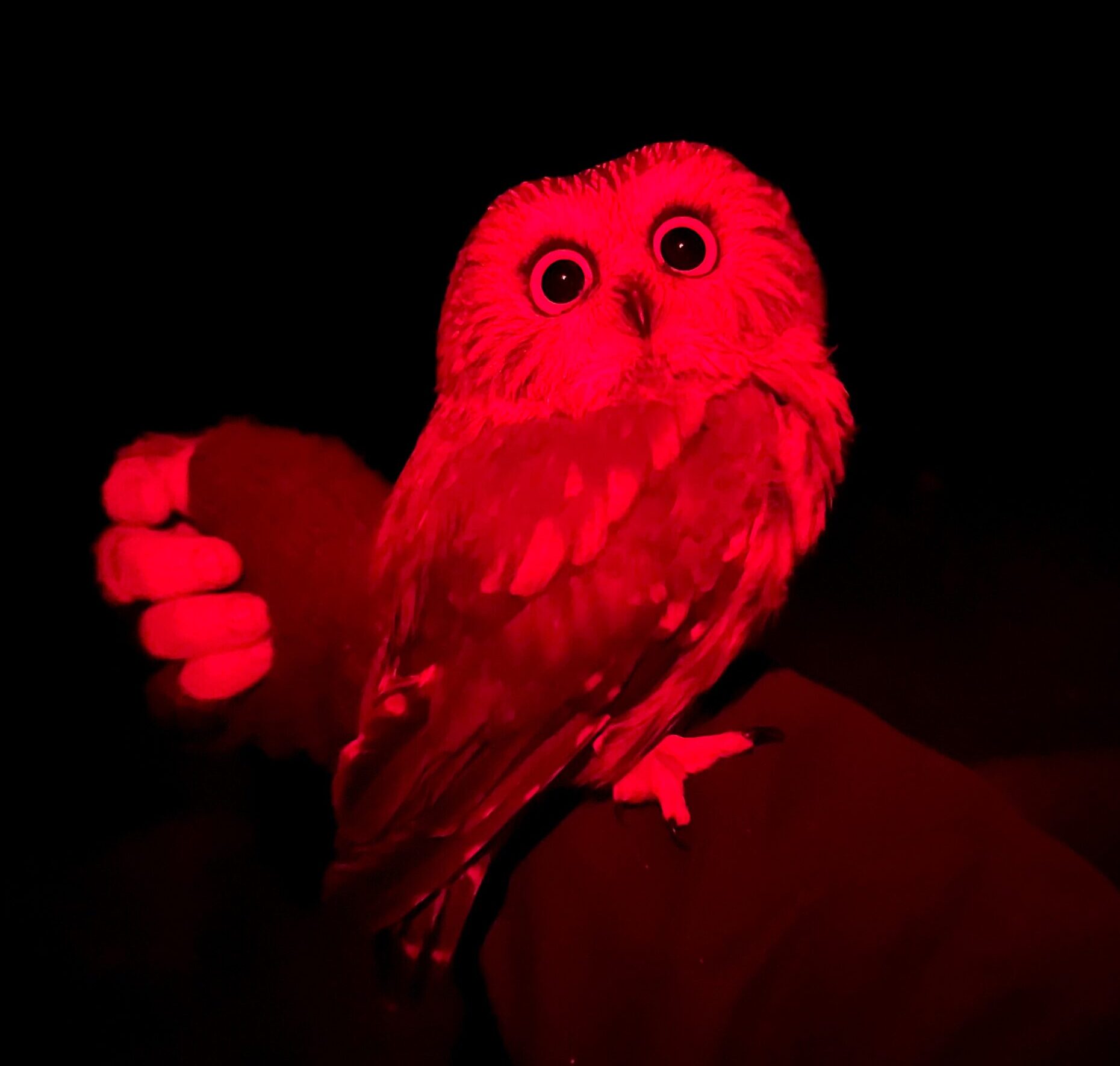
After being forced to close on a couple rainy, windy days, we re-opened our nets to catch 22 owls one night, then 50 the night after.
The next night we caught a whopping 84 owls, setting a station record for the most owls caught in a single night, almost doubling the previous record!
We caught an incredible 23 owls on one net run alone! After that night, all I could dream about was extracting Northern Saw-whets from the net…
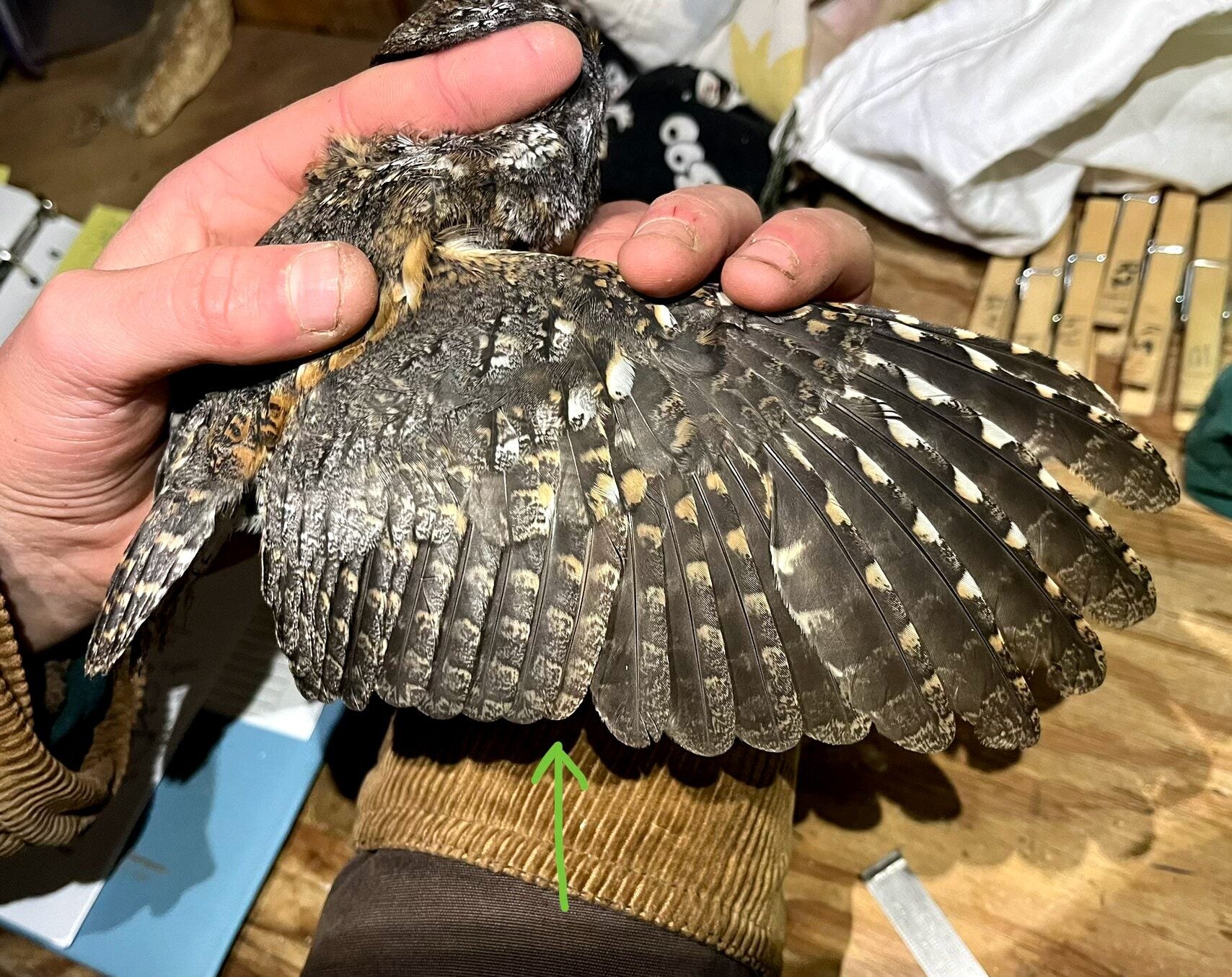
One of my favorite things about Saw-whets is the variability in their facial expressions and eye color. Every owl also has a distinct personality, some being gentle and calm, others being feisty and fierce.
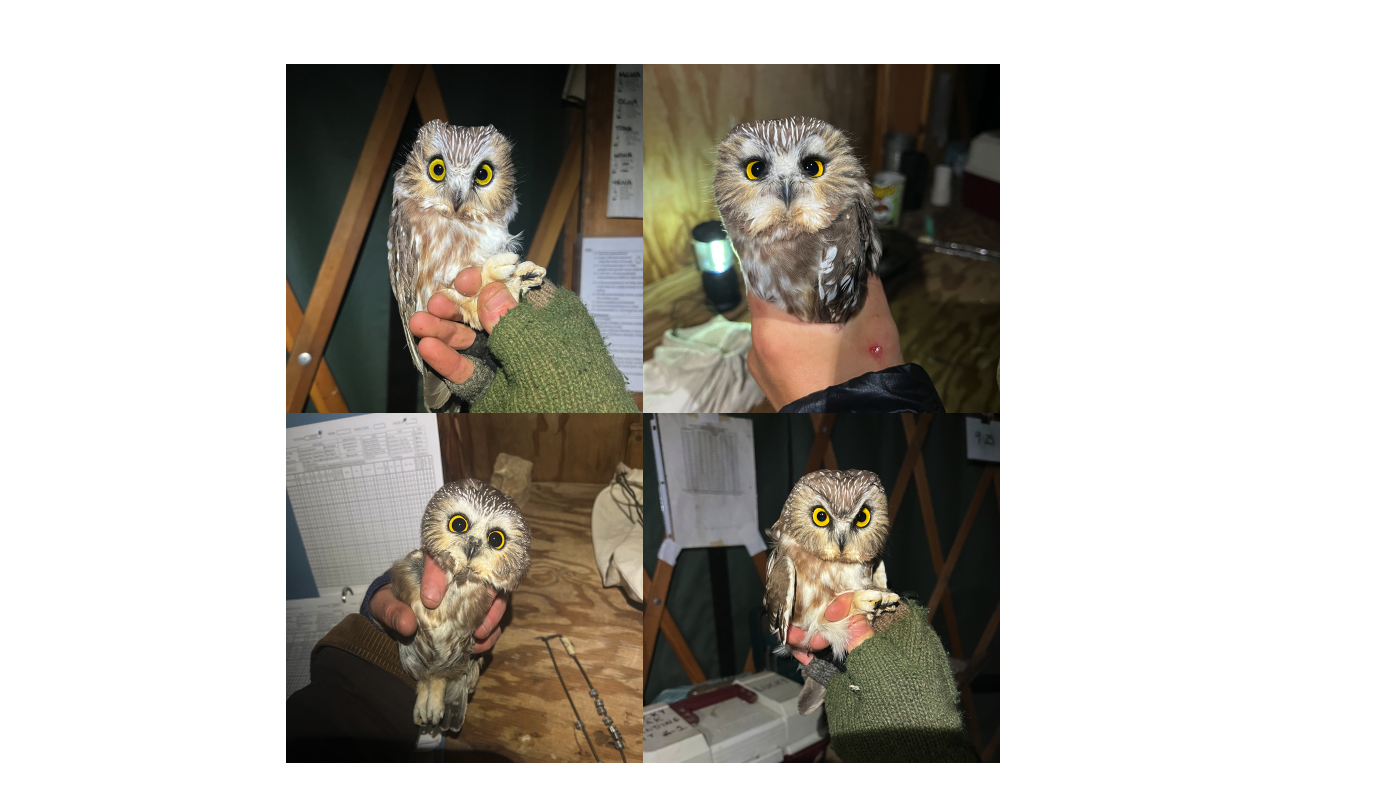
We ended our season frozen and tired but with 611 Northern Saw-whet Owls, 67 Flammulated Owls, and 678 total owls banded.
Although we didn’t catch any out-of-the-ordinary species, we came in third place for the most Saw-whets, Flams, and total owls since the owl program started in 1999.
Apart from our success with catching owls, we had a lovely fall on the Peak, from watching the sunrise while sleepily closing nets, to watching our resident turkey babies grow into adults, to playing cards in hurricane-level rains. I wish good luck and safe travels to all our dear owls and fellow biologists as they migrate away for the season, hopefully returning to Lucky Peak once again next year.
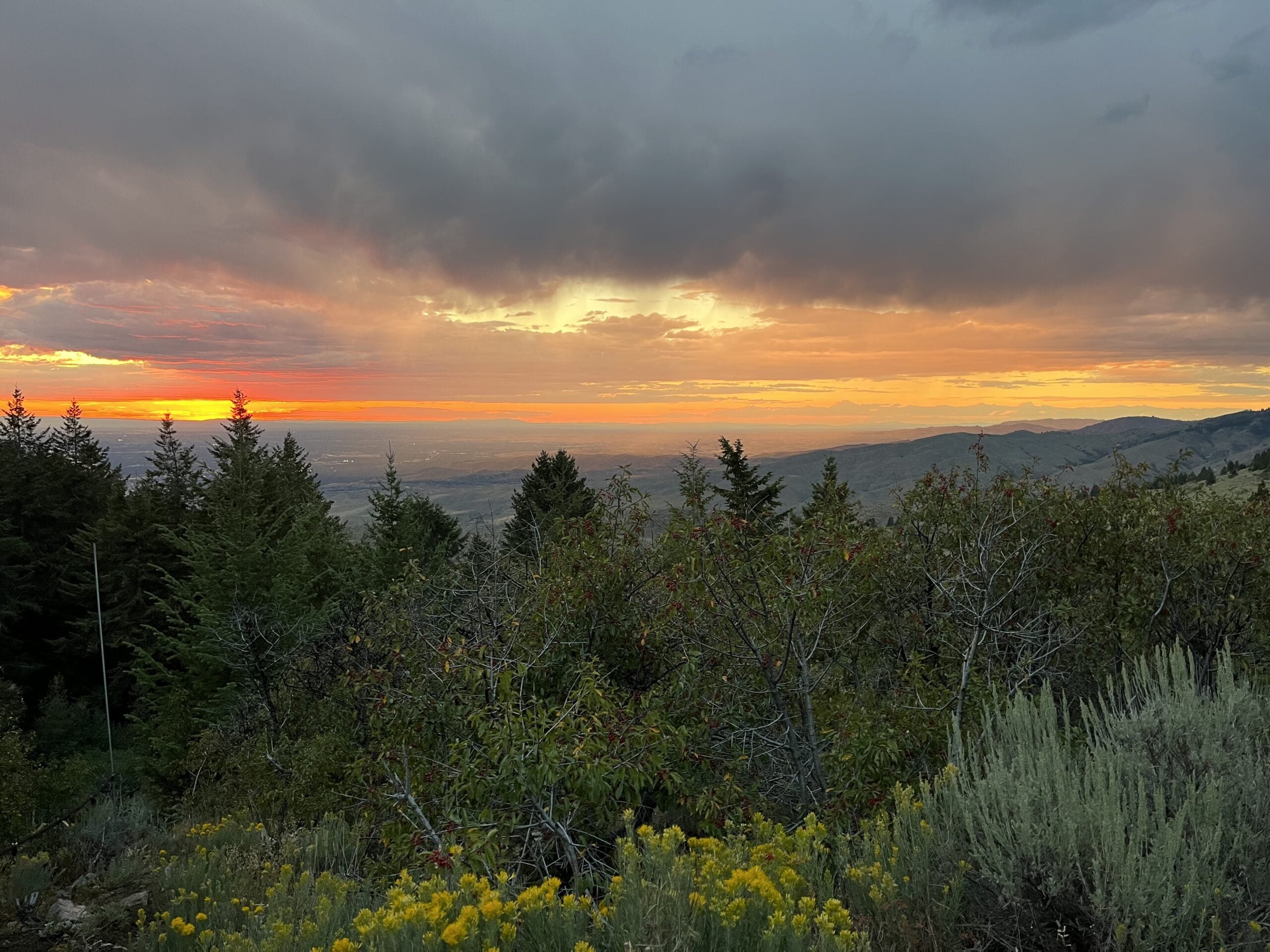
This article is part of our 2023 end of the year newsletter! View the full newsletter here, or click “older posts” below to read the next article.
Make sure you don’t miss out on IBO news! Sign up to get our email updates.